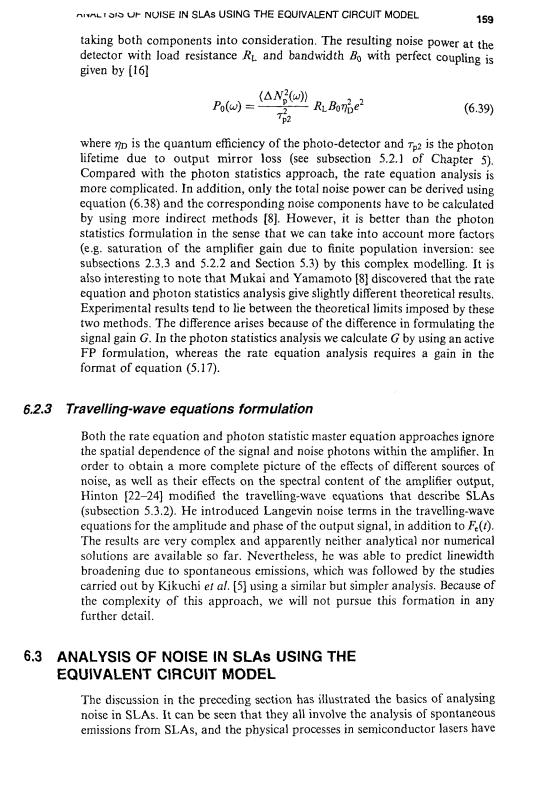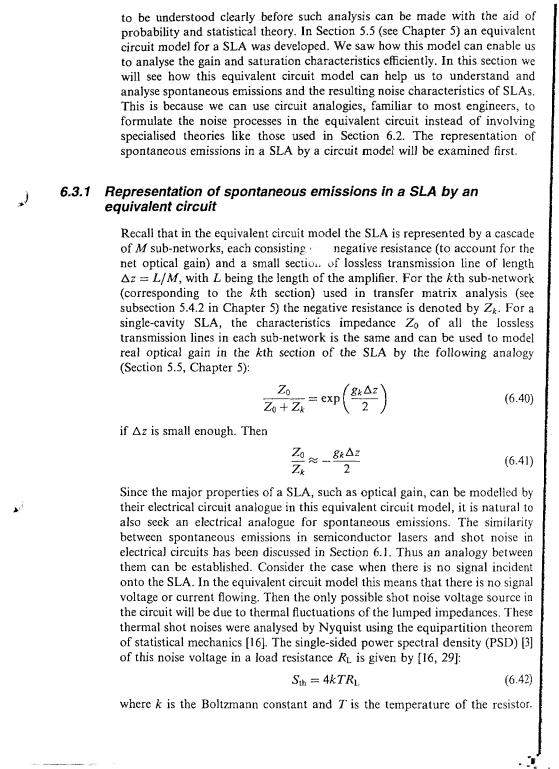
Ghafouri-Shiraz H. - Fundamentals of Laser Diode Amplifiers (1996)(en)
.pdf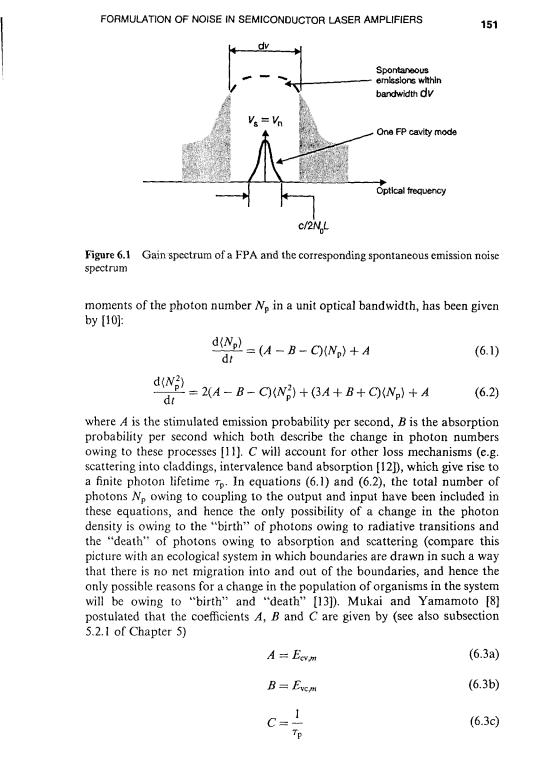
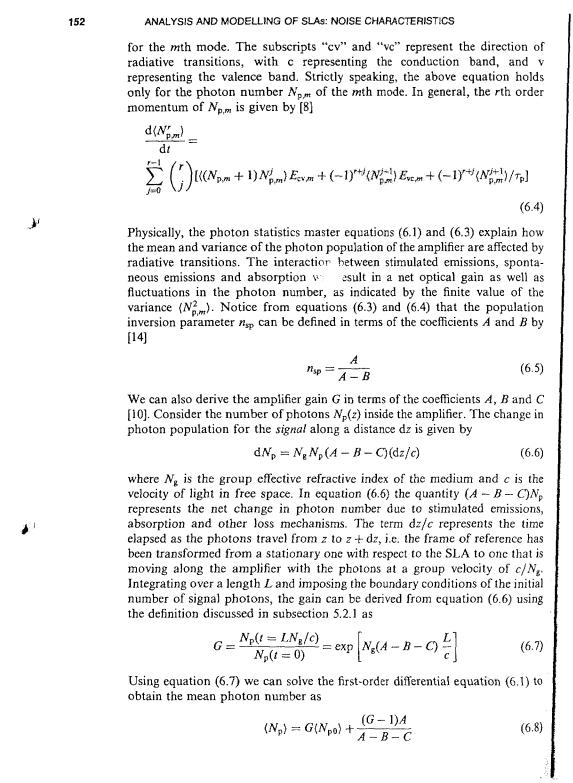



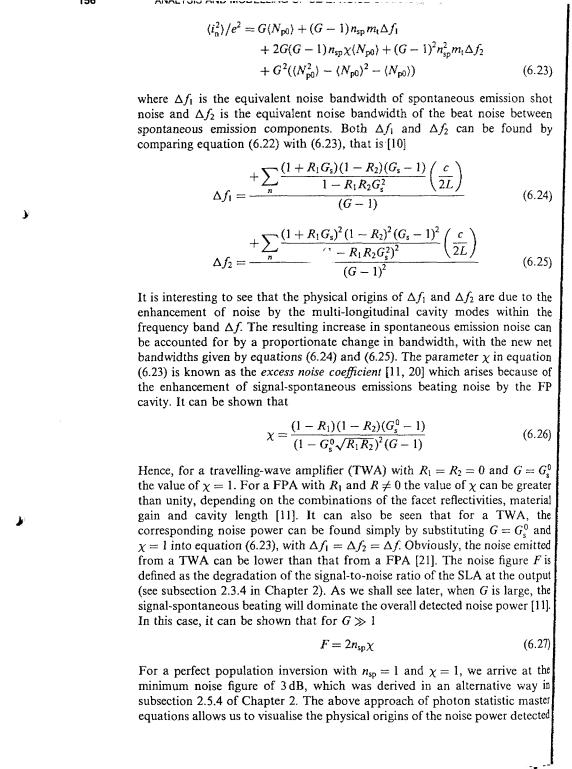
l-UHMULATION OFNOISE INI SEMICONDUCTOR LASER AMPLIFIERS |
157 |
by the receiver. It also allows us to separate the different contributions to the total noise power by equation (6.12) in the analysis [11]. However, the analysis neglects the spatial dependence of the spontaneous emissions and signal, as well as losing phase information by using the concept of photon counting [2224]. Nevertheless, its relative simplicity is found to be very useful in analysing noise in SLAs, and subsequent improvements on this technique have been used. A recent application of this approach to noise analysis can be found in the work of Goldstein and Teich [13] who extended the preceding analysis to a general resonator configuration, which included coupling effects between amplifier output and PDs [25].
6.2.2Rate equation approach
A more direct way to analyse noise in SLAs is to include fluctuations in the multi-mode rate equations used to analyse the semiconductor laser amplifier (see subsection 5.3.1 in Chapter 5). Mukai and Yamamoto [8] used this approach by postulating that the carrier density n and photon number Nffn of the mih mode are related by the following equations:
^ = P - R - ]T rGmNp,m + Fe(t) |
|
(6.28) |
|||
|
|
т |
|
|
|
dN |
N |
|
+ Ff>m(t) |
(6.29) |
|
d/ |
Tp |
' |
|||
|
|
||||
where P is the pumping rate due to the injection electrical current, R is the carrier recombination rate, Gm is the stimulated emission coefficient given by •Ecv.m —Evc,m, with £су,т being the stimulated emission probability coupled to the mth mode and £тс,т being the corresponding induced absorption probability, rp is the photon lifetime, Г is the optical confinement factor and
Pinim is the rate of injection of signal photons of the wth mode. Fe(t) and FP|OT(/) are the fluctuation operators [26] in the form of Langevin shot noise sources to
account for fluctuations in « and Npim caused by random spontaneous emissions [7, 17]. Note that the form of equations (6.28) and (6.29) are similar to the rate equations described in subsection 5.3.1 (see Chapter 5) except for the Langevin noise terms which account for fluctuations caused by spontaneous emissions [27]. The above equations can be solved by first linearising them as [8-28]
n(t) = n + Ди(0 |
(6.30) |
Np,m(t) = Np,m + &Np:n(t) |
(6.31) |
In the above equations a circumflex (") notation denotes the unperturbed steady-state values for the parameters. Expressing R, Gm and £ст,т using these perturbed quantities with Taylor's theorem in equations (6.28) and (6.29) [8]:

